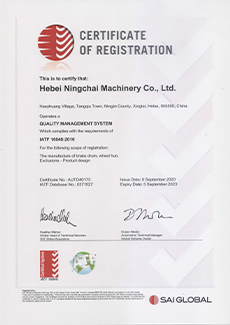
-
 Afrikaans
Afrikaans -
 Albanian
Albanian -
 Amharic
Amharic -
 Arabic
Arabic -
 Armenian
Armenian -
 Azerbaijani
Azerbaijani -
 Basque
Basque -
 Belarusian
Belarusian -
 Bengali
Bengali -
 Bosnian
Bosnian -
 Bulgarian
Bulgarian -
 Catalan
Catalan -
 Cebuano
Cebuano -
 Corsican
Corsican -
 Croatian
Croatian -
 Czech
Czech -
 Danish
Danish -
 Dutch
Dutch -
 English
English -
 Esperanto
Esperanto -
 Estonian
Estonian -
 Finnish
Finnish -
 French
French -
 Frisian
Frisian -
 Galician
Galician -
 Georgian
Georgian -
 German
German -
 Greek
Greek -
 Gujarati
Gujarati -
 Haitian Creole
Haitian Creole -
 hausa
hausa -
 hawaiian
hawaiian -
 Hebrew
Hebrew -
 Hindi
Hindi -
 Miao
Miao -
 Hungarian
Hungarian -
 Icelandic
Icelandic -
 igbo
igbo -
 Indonesian
Indonesian -
 irish
irish -
 Italian
Italian -
 Japanese
Japanese -
 Javanese
Javanese -
 Kannada
Kannada -
 kazakh
kazakh -
 Khmer
Khmer -
 Rwandese
Rwandese -
 Korean
Korean -
 Kurdish
Kurdish -
 Kyrgyz
Kyrgyz -
 Lao
Lao -
 Latin
Latin -
 Latvian
Latvian -
 Lithuanian
Lithuanian -
 Luxembourgish
Luxembourgish -
 Macedonian
Macedonian -
 Malgashi
Malgashi -
 Malay
Malay -
 Malayalam
Malayalam -
 Maltese
Maltese -
 Maori
Maori -
 Marathi
Marathi -
 Mongolian
Mongolian -
 Myanmar
Myanmar -
 Nepali
Nepali -
 Norwegian
Norwegian -
 Norwegian
Norwegian -
 Occitan
Occitan -
 Pashto
Pashto -
 Persian
Persian -
 Polish
Polish -
 Portuguese
Portuguese -
 Punjabi
Punjabi -
 Romanian
Romanian -
 Russian
Russian -
 Samoan
Samoan -
 Scottish Gaelic
Scottish Gaelic -
 Serbian
Serbian -
 Sesotho
Sesotho -
 Shona
Shona -
 Sindhi
Sindhi -
 Sinhala
Sinhala -
 Slovak
Slovak -
 Slovenian
Slovenian -
 Somali
Somali -
 Spanish
Spanish -
 Sundanese
Sundanese -
 Swahili
Swahili -
 Swedish
Swedish -
 Tagalog
Tagalog -
 Tajik
Tajik -
 Tamil
Tamil -
 Tatar
Tatar -
 Telugu
Telugu -
 Thai
Thai -
 Turkish
Turkish -
 Turkmen
Turkmen -
 Ukrainian
Ukrainian -
 Urdu
Urdu -
 Uighur
Uighur -
 Uzbek
Uzbek -
 Vietnamese
Vietnamese -
 Welsh
Welsh -
 Bantu
Bantu -
 Yiddish
Yiddish -
 Yoruba
Yoruba -
 Zulu
Zulu
convert rear drums to disc brakes
Converting Rear Drums to Disc Brakes A Comprehensive Guide
When it comes to enhancing the performance of a vehicle, one of the most effective modifications is upgrading the braking system. Many older car models are equipped with rear drum brakes, which, while effective for their time, may not provide the same level of performance and safety as modern disc brakes. This article delves into the benefits of converting rear drum brakes to disc brakes, the process involved, and some important considerations for car enthusiasts.
Why Upgrade to Disc Brakes?
1. Improved Performance Disc brakes offer superior stopping power compared to drum brakes. They dissipate heat more efficiently, which reduces the risk of brake fade during heavy use, such as in performance driving or when towing.
2. Better Water Resistance Disc brakes tend to perform better in wet conditions. Since the brake pads are always in contact with the disc, water is less likely to interfere with braking performance, leading to increased safety.
3. Easier Maintenance Disc brakes are generally easier to service. With drum brakes, access to the drum can be cumbersome, while disc brakes allow for straightforward inspection and replacement of pads.
4. Aesthetic Appeal Many car enthusiasts find that disc brakes look better than drum brakes. If you have modified your car for aesthetics, having a modern braking system can enhance the overall appearance.
The Conversion Process
Converting from rear drums to disc brakes is a complex process but can be rewarding. Here’s a step-by-step overview of what the conversion entails
1. Research and Planning Before starting the conversion, it’s wise to research the compatibility of parts with your vehicle model. Look for disc brake conversion kits specifically designed for your car. These kits typically include calipers, rotors, brackets, and any necessary hardware.
2. Gathering Tools and Parts Ensure you have all the necessary tools, including wrenches, a jack, jack stands, and possibly a brake line wrench. Gather your conversion kit and any additional parts you may need, such as new brake lines.
convert rear drums to disc brakes

3. Removing Old Components Start by safely lifting the vehicle and removing the wheels. Take off the drum brakes, including the shoes, springs, and backing plate. Be cautious with the components, as springs can be under tension.
4. Installing the Disc Brake Assembly Follow the instructions provided with your conversion kit. Generally, you will mount the new brackets and calipers to the rear axle, followed by the installation of the rotors.
5. Upgrading Brake Lines In many cases, you will need to replace the existing brake lines with new ones designed for disc brakes. Make sure all connections are secure and leak-free.
6. Bleeding the Brakes Once everything is in place, bleed the brake lines to remove any air in the system. This is crucial for ensuring proper brake function.
7. Testing After everything is installed, test the brakes in a safe environment before hitting the road. Check for any unusual noises or loss of performance.
Important Considerations
While converting to disc brakes can improve performance and safety, there are a few things to keep in mind
- Cost The conversion can be costly, depending on the parts and labor. Ensure it fits within your budget. - Brake Balance Upgrading only the rear brakes might alter your vehicle's brake balance. Consider upgrading front brakes if necessary for optimal performance.
- Legal and Insurance Issues Check your local laws regarding modifications, and inform your insurance provider to ensure adequate coverage.
In conclusion, converting rear drum brakes to disc brakes is a rewarding project that can greatly enhance vehicle performance and safety. With proper planning and execution, enthusiasts can enjoy improved driving dynamics and aesthetics, making the investment worthwhile.
-
What Are Drum BrakesNewsJul.07,2025
-
Understanding Brake Drum MaterialNewsJul.07,2025
-
Semi-Trailer Brake Drum: A Key Component for Extreme Loads and Long-Distance TransportNewsJul.07,2025
-
Drum Brake Pads for SaleNewsJul.07,2025
-
Brake Drums for SaleNewsJul.07,2025
-
Brake Drum ManufacturerNewsJul.07,2025
-
Aluminum Brake Drums: The Future of High-Performance CarsNewsJul.07,2025
